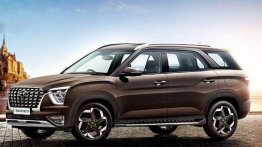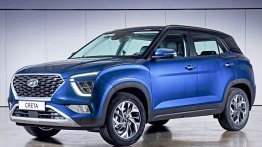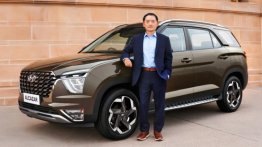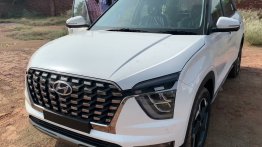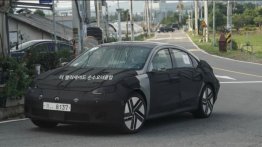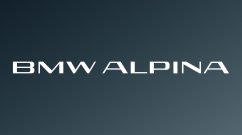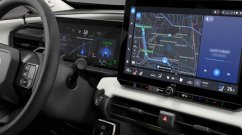The Hyundai i20 is finally here. Its looks are awesome, much like its younger brother, i10. We find the lines are terrific and the side profile looks like flowing thick, hot chocolate. The rear fender is the best bit. Looks like frills made when you shear on satin cloth. It's seems to us that Hyundai's design engineers were given an assignment of creating an art car. They have pulled it off.
Press Release-
With its fresh and head-turning styling, versatile interior, class-leading safety and engaging driver dynamics, the sparkling new i20 takes centre stage on the Hyundai stand at this year’s Paris Mondial de l'Automobile. Building on the reputation for peerless reliability and exceptional cost-effectiveness established by its Getz predecessor, i20 offers drivers more of everything – enhanced functionality from the intelligently configured cabin layout, higher levels of luxury, convenience and safety equipment, engaging handling from its all-new chassis and tuned suspension, and an extensive seven-strong line-up of punchy petrol and frugal turbo-diesels engines, with the choice of manual or automatic transmissions. Designed and developed in Europe to meet the high expectations of European drivers, and benefiting from Hyundai’s unlimited mileage three-year warranty, the i20 arrives fully armed to succeed in Europe’s ultra-competitive supermini sector. Initially available as a five-door model, a sportier three-door i20 version will debut in January 2009.
Style and Design
Designed at Hyundai’s European headquarters in Russelsheim, Germany, the chic new i20 follows in the stylish European footsteps of the acclaimed i10 and i30 models. Lower, longer and wider than the Getz it replaces, the five-door i20 rides on an extended 2525mm wheelbase, enhancing both its athletic stance and spacious interior architecture. Featuring Hyundai’s distinctive design motifs – a bold chrome-topped grille flanked by piercing teardrop headlamps at the front and striking stacked rear light clusters – the i20’s modern lines are further strengthened by neat detailing, including colour-co-ordinated bumpers, sills and wing mirrors, integrated antenna, mechanical boot release, flush-mounted door handles and chunky standard-fit 16-inch 12-spoke alloy wheels. And new i20 arrives with a palette of 10 new solid and metallic exterior hues – including fashionable Crystal White.
Interior
Luxury and versatility blend seamlessly in the new i20’s spacious and generously appointed cabin. With all four trim levels – Classic, Comfort, Style and Premium – featuring climate control, a powerful four-speaker radio, CD and MP3 audio system with integrated data display screen, a multi-function steering wheel, tyre pressure monitoring system, height-adjustable driver seat, keyless entry and electrically operated windows and side mirrors, i20’s list of standard features puts it head and shoulders above the majority of its rivals.
Suspension, Ride Quality and NVH
In keeping with its dynamic styling, i20 rides on an all-new platform that delivers an athletic and agile driving experience. With much of the car’s ride and handling development work undertaken on European roads – hot weather testing was carried out in Spain, cold weather testing in Sweden and high-speed testing in Germany – Hyundai’s ride and handling engineers have ensured i20’s front MacPherson strut and rear torsion beam suspension delivers the taut and alert ride quality favoured by the European market. The new rack and pinion steering setup has also been tuned to deliver quick and accurate responses resulting in excellent urban agility. Extensive use of advanced noise reduction materials throughout the development process – particularly in the diesel-powered models – has resulted in exceptionally high levels of refinement, imbuing i20 with a sophisticated and cosseting cabin ambience.
Powertrain
Hyundai’s new i20 debuts with a range of seven petrol and diesel engines that have been extensively revised to deliver greater performance, enhanced economy and lower emissions than before. The Euro IV-compliant petrol line-up comprises the 78PS 1.2, 100PS 1.4 and 126PS 1.6 all available with five-speed manual transmissions, with the option of four-speed automatic gearboxes on the 1.4 and 1.6 models. Posting a low CO?rating of just 124g/km and returning just 5.2 l/100km on the combined cycle, the all-new 1.2 all-alloy engine delivers an excellent combination of performance and economy.
Geared up to meet the high European demand for diesel power, i20 arrives with four Euro IV -compliant turbo diesel engines, fitted with CPF diesel particulate traps as standard for 1.6 (115ps & 128ps) diesel engine. The 1.4 comes in two specifications – 75PS and 90PS – while the flagship 1.6 is available in 115PS and 128PS trim. Economical and clean, the 115PS variant returns a class-leading CO?figure of 115g/km and 4.3l/100km on the combined cycle. Both 1.4 models come with five-speed manual transmissions, while the flagship 1.6 is mated to a six-gear manual drivetrain.
Safety
Hyundai is synonymous with class-leading safety, and the new i20 debuts with exceptionally high levels of active and passive safety equipment. Its outright agility and responsiveness play a key role in keeping the i20 driver out of harm’s way, but should the worst occur those on board are protected by the extensive use of high-tensile steel in the Hyundai’s robust chassis, six airbags – front, side and curtain – fitted as standard, active headrests, front seatbelt pretensioners and latest generation ABS anti-lock brakes, ESP electronic stability control, EBD Electronic Brakeforce Distribution. This safety package is further enhanced by an advanced tyre pressure monitoring system, Isofix mounting points in the rear and seatbelt reminders for all five occupants, which means i20 arrives on the market as one of the safest cars in its class. Hyundai is confident of a full five-star Euro NCAP adult occupant protection and child protection crash test result for the i20.
Convenience The i20’s five-seater interior may pamper, but it also majors on everyday practicalities with a 40:60 split flat-folding rear bench with a low lip for easy loading into the a roomy and regularly-shaped 295-litre rear loadbay, numerous intelligently positioned interior storage spaces including a large cooled passenger glovebox and two cupholders, and excellent all round visibility. These elements are complemented by the reach-and-rake adjustable steering wheel, complete with integrated audio controls and keyless central locking actuated by i20’s ergonomically designed folding keyfob.
i20 blue
Following the unveiling earlier this year of the first of its i-blue range of advanced eco-dynamic vehicles, Hyundai Motor Europe has revealed the latest addition to the family: the i20 blue.
Based on the all-new i20 B-segment car, premiered at the 2008 Mondial de l’Automobile in Paris, this ‘blue’ variant incorporates a number of real-world modifications to further enhance the standard car’s already-impressive environmental credentials. These improvements are achieved without compromising performance, reliability or driver satisfaction, making the i20 blue a realistic solution for motorists.
The ‘blue’ package involves revisions to the i20’s power train efficiency, aerodynamics and chassis, to deliver a significant reduction in CO2 emissions and fuel consumption, positioning the i20 blue alongside the leading performers in the segment.
While the regular i20 achieves notably low figures for CO2 emissions and fuel consumption – 115g/km and 4,3 litre/100km respectively – the i20 blue delivers even more impressive results: just 99 g/km and 3,75 litres/100km. In other words, the i20 blue offers a reduction of 15 per cent in CO2 emissions and an improvement of 15 per cent in fuel efficiency, compared to the already-competitive i20.
Power train and performance
The i20 blue runs the extremely efficient 1.4 CRDi diesel engine, which produces 90PS and generates 220 Nm of torque. The power train is mated to a six-speed manual gearbox – instead of the car’s usual five-speed unit – in which the ratios have been modified in 3rd, 4th and 5th gear. Performance is very respectable in the i20 blue, with a top speed of 176 km/h and a 0-100km/h time of around 13 seconds.
Engine efficiency has been improved by minimizing driveline friction and by utilizing high-performance, low-friction engine oil. Also optimized for low emissions and high efficiency is the engine’s electronic software, which manages timing, injection pressure and idle speed.
Perhaps the most noticeable change from the driver’s perspective is the application of a Hyundai-specific ISG Start-Stop system. A Bosch product, customized for the i20 blue, this innovation cuts the engine when the car is stationary and the gearbox is disengaged, and restarts the engine when the clutch pedal is depressed. This activity is particularly effective at minimizing emissions in slow-moving, urban traffic.
Aerodynamics
Advances in aerodynamic drag reduction contribute to the vehicle’s remarkably low emissions and fuel consumption statistics. Ground clearance has been reduced by 15 millimeters compared to the regular i20, while full-length under floor covers enhance the car’s aerodynamic efficiency.
Exterior
Externally, the i20 blue closely resembles the ‘standard’ i20. Bespoke badging on the rear indicates that the car belongs to the ‘i-blue’ fold, and those with a keen eye will notice the application of the Michelin Energy low rolling resistance tires and the subtle changes made to the design of the grille and bodywork.
Hans Ullrich Göbel, Manager Product Planning at Hyundai Motor Europe Technical Centre, said:
“By drawing on currently available Hyundai technologies and design techniques, we are able to deliver to the market an uncompromised line-up of optimized, low-emissions vehicles, of which the i20 blue is the latest example. Its ultra-competitive environmental credentials demonstrate our commitment to conceiving eco-friendly models which can be mass-produced today, while we also focus on developing solutions for the medium and long term.
“Hyundai takes very seriously its environmental and social responsibilities, and is making efforts on many fronts to reduce emissions of greenhouse gases, cut consumption and waste, and preserve resources. We recognize the importance of anticipating and responding to ever-increasing customer and legislative demand, and we plan for change in our global operations as well as in our vehicle line-up.”




